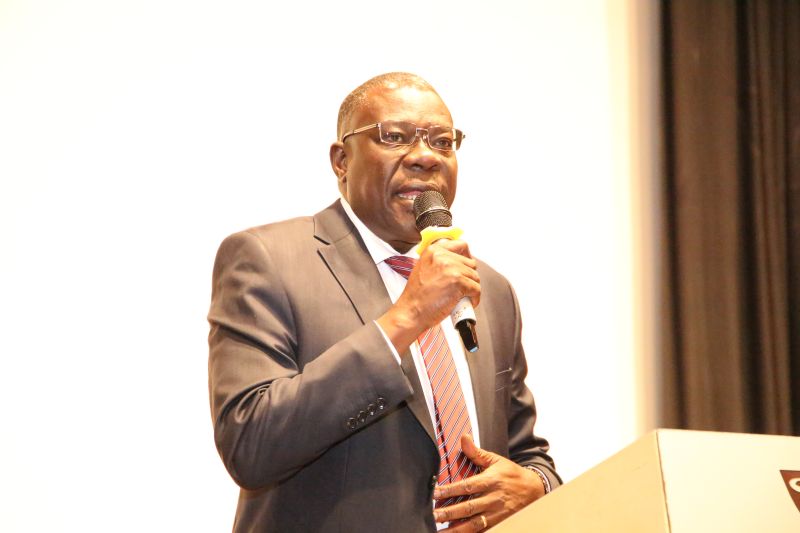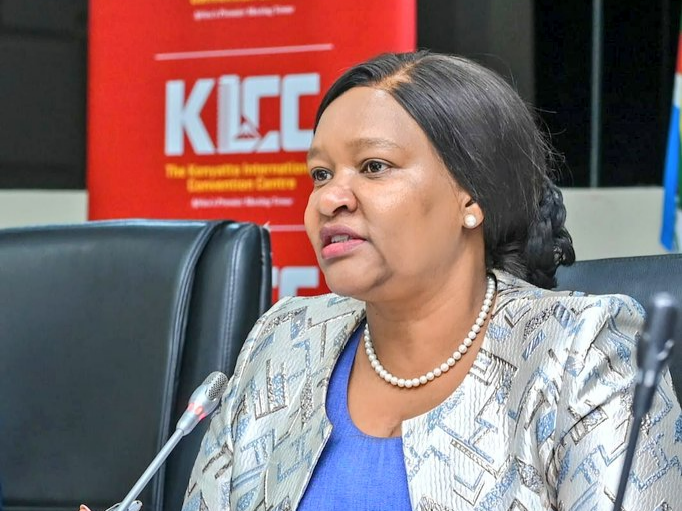Arthur Osiya, President William Ruto’s trusted Principal Administrative Secretary, has stormed into the 2027 Busia gubernatorial race with a decisive edge. He boasts a record of securing over 100 top government and private sector positions for county residents, a firm stance on zero tolerance for corruption, and a unifying Teso–Luhya pact already in place. Meanwhile, incumbent Governor Paul Otuoma’s top aides are under the watch of the EACC over KSh 1.4 billion scandals, as the county continues to cry out for hospitals, schools, and honest leadership
To unlock the full article:
Choose one of the options below:
- Ksh 10 – This article only
- Ksh 300 – Monthly subscription
- Ksh 2340 – Yearly subscription (10% off)
By Benson Nyangweso
Principal Administrative Secretary Arthur Amug Osiya’s entry into the 2027 Busia gubernatorial race poses the most formidable challenge yet to incumbent Governor Paul Otuoma, who is grappling with mounting corruption allegations, stalled development projects, and accusations of ethnic favouritism.
Otuoma’s 2027 re-election, initially thought to be a formality, has now been severely undermined by the recent arrest of six senior county officials by the Ethics and Anti-Corruption Commission (EACC) over corruption allegations. The officials were arrested over allegations of misappropriating public funds through irregular procurement processes, including tenders worth KSh 1.4 billion allegedly awarded to 26 proxy companies linked to insiders.
The scandal, which has drawn sharp Senate scrutiny, has painted Otuoma’s administration as an “organised criminal enterprise” incapable of accounting for over KSh 200 million in public funds. Those arrested included three County Executive Committee (CEC) members: Topister Nyati Wanyama (Finance and Economic Planning), Peter Khasamule Odima Haris (Housing and Urban Development), and Paul Olung’a Bartholomew Ekwenye (Youth, Sports, Culture, Gender and Creative Arts).
Others were Gypson Ojiambo Wafula, Chief Officer for Finance, ICT, and Economic Planning; Evans Wandera Wangata, Director of Budget; and Leonard Omacha, Director of Supply Chain Management. Beyond the procurement scandals, Otuoma’s administration faces accusations of poor service delivery, including delayed salaries for county staff, non-remittance of statutory deductions, and failure to provide farm inputs to local farmers.
Critics, including Arthur Osiya, have also highlighted the chronic underfunding of hospitals and schools, which has exacerbated healthcare access and educational disparities in a border county heavily reliant on cross-border trade. Otuoma’s perceived detachment from daily governance, evidenced by his Senate testimony admitting ignorance of financial malpractices, has fuelled perceptions of weak leadership.
The governor’s inability to rebut forensic audits or implement Senate recommendations has invited further EACC involvement, with lifestyle audits now looming for implicated officials. Politically, his ODM loyalty, ODM being the most dominant party in the county, initially offered him an edge. However, following the passing of party supremo Raila Odinga, Otuoma now stands on very shaky ground.
Mr Osiya, on the other hand, enjoys the backing of a strong Teso community, including stalwarts like former governor Sospeter Ojaamong, making him a formidable contender. His proximity to President William Ruto positions him favourably to secure UDA’s nomination and unlock central government resources, a key advantage in a county plagued by devolved unit shortfalls.
Osiya’s track record includes facilitating the employment of over 100 people from across Busia County in both government and private sectors since his appointment, demonstrating tangible empowerment efforts. Local leaders have praised Osiya’s emphasis on merit-based leadership and unity, rejecting the tribal divisions that have long defined Busia politics.
At a recent function, he urged voters to prioritise delivery: “We must reject politics that divide us along tribal lines or reward a few at the expense of the majority. Our choice must be guided by clear plans to fix our hospitals, improve our schools, support farmers, create jobs for our youth, and manage public resources transparently and fairly.”
Osiya’s appeal transcends ethnicity, drawing endorsements from figures such as former Woman Representative Florence Mutua and businessman Erick Kombo Obuya, who have dismissed Otuoma and his allies as politically compromised.
Osiya’s refusal to resign prematurely from government, vowing to step aside only near the 2027 polls, underscores his commitment to service over politicking, earning him credibility as a “retiree with substance” despite jabs from Governor Otuoma’s allies.
Busia’s electoral landscape traditionally hinges on the Luhya-Teso balance and party strength, with ODM holding sway among Luhya, Luo, andTeso areas. Osiya’s UDA bid is likely to disrupt this arrangement, especially in the post-Raila era. Otuoma and Ojaamong both rode ODM waves to victory, but Osiya’s camp argues that performance, not affiliation, will prevail, as echoed by local leaders urging voters to ignore party labels.
Osiya must also navigate rivalry from a “village mate”, former County Executive Engineer Vincent Sidai. At the August 2025 burial of Mzee Ayub Nyongesa Odikor in Kooli village, Amagoro Constituency, Ojaamong hinted at mediating a unity meeting. However, both Osiya and Sidai rebuffed calls to consolidate, with Osiya declaring: “I remain determined to become Busia’s third governor.”
As campaigns intensify, Osiya’s blend of national leverage, employment initiatives, and anti-corruption stance positions him as the frontrunner. For Otuoma, redeeming his legacy amid ongoing probes will require swift reforms, a tall order in a county increasingly demanding change.
[/full]




